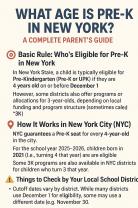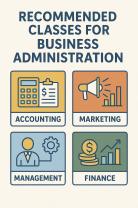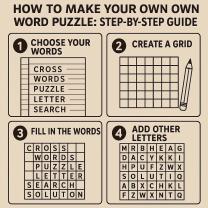What is the read- ing lesson?
A reading lesson is a structured instructional session designed to help students develop and improve their reading skills. These lessons are typically conducted in educational settings, such as schools and classrooms, and are tailored to the specific needs and abilities of students at different grade levels. The primary goal of a reading lesson is to enhance students' reading comprehension, fluency, vocabulary, and overall literacy skills.
Here's an overview of what a typical reading lesson might include:
1. Objective Setting:
- The lesson begins with a clear statement of the learning objectives. What specific reading skills or concepts will students focus on during the lesson? This could include objectives related to reading comprehension, phonics, decoding, vocabulary, or critical thinking.
2. Pre-Reading Activities:
- Before diving into the text, the teacher may engage students in pre-reading activities. This might involve discussing the topic, activating prior knowledge, introducing key vocabulary, or making predictions about the content.
3. Reading the Text:
- The core of the lesson involves reading a text, which can be a story, article, poem, or any written material relevant to the lesson's objectives.
- Students may take turns reading aloud, engage in choral reading, or read silently, depending on the instructional approach.
4. Comprehension and Analysis:
- After reading, students are guided through activities that help them understand and analyze the text. This may include discussions, questions, and exercises to assess comprehension, infer meaning, and explore literary elements.
5. Vocabulary Development:
- Vocabulary instruction is often integrated into reading lessons. Students may learn new words through context clues, word analysis, or direct instruction.
6. Fluency Practice:
- Fluency, the ability to read smoothly and expressively, is an important component of reading instruction. Students may practice reading passages repeatedly to improve fluency.
7. Guided Reading:
- In guided reading sessions, the teacher works closely with small groups of students to provide individualized support and address specific reading challenges.
8. Independent Reading:
- Independent reading time allows students to practice their reading skills by choosing and reading books or materials at their own level.
9. Assessments and Feedback:
- Reading assessments, such as comprehension quizzes or oral reading assessments, may be administered to gauge students' progress.
- Teachers provide feedback and guidance to help students improve their reading skills.
10. Extension Activities:- Some reading lessons include extension activities, such as writing responses, creating projects, or engaging in discussions related to the text.
11. Reflection and Review:- The lesson concludes with a review of the learning objectives and a reflection on what students have learned. Teachers may assign homework or additional practice if needed.
Reading lessons can vary widely in format and content, depending on the grade level, curriculum, and specific educational goals. They are an essential part of literacy instruction, helping students become proficient and confident readers, which is a crucial skill for academic success and lifelong learning.
The Reading Lesson: Objectives, Techniques, and Importance
The reading lesson is one of the most important parts of the school day. It is an opportunity for students to develop the essential literacy skills they need to succeed in school and in life.
The objectives of a reading lesson vary depending on the grade level and the specific needs of the students. However, some common objectives include:
- Teaching students how to decode text. This includes teaching students how to sound out words, recognize sight words, and use phonics and structural analysis skills.
- Teaching students how to comprehend text. This includes teaching students how to understand the main idea and supporting details of a text, identify the characters and setting, and follow the plot.
- Teaching students how to develop their vocabulary. This includes teaching students how to learn new words and use them in their own writing and speaking.
- Teaching students how to become fluent readers. This includes teaching students how to read smoothly and accurately at a good pace.
There are a variety of techniques that teachers can use to teach reading. Some effective techniques include:
- Explicit instruction: Explicit instruction involves teaching students the specific skills and strategies they need to become successful readers. Teachers can provide explicit instruction through direct instruction, guided practice, and independent practice.
- Interactive reading: Interactive reading involves engaging students in the text and with each other as they read. Teachers can promote interactive reading by asking questions, having students predict what will happen next, and discussing the text with the class.
- Read-alouds: Read-alouds involve the teacher reading aloud to the class. Read-alouds are a great way to expose students to high-quality literature and to model fluent reading.
- Independent reading: Independent reading involves giving students time to read on their own. Independent reading is essential for students to develop their fluency and comprehension skills.
Effective Reading Lessons: Strategies for Building Literacy
There are a number of strategies that teachers can use to build literacy in their students. Some effective strategies include:
- Providing students with a variety of texts to read. Students should have access to a variety of texts, including fiction, non-fiction, poetry, and plays. This will help students to develop their interests and to become more well-rounded readers.
- Creating a positive and supportive learning environment. Students need to feel comfortable taking risks and experimenting with their reading. Teachers can create a positive and supportive learning environment by encouraging students to share their thoughts and ideas, providing them with opportunities to revise and edit their work, and celebrating their successes.
- Differentiating instruction to meet the needs of all learners. Some students may need more support than others when it comes to reading. Be sure to provide students with the support they need to succeed.
- Collaborating with parents and families. Parents and families play an important role in their children's literacy development. Teachers can collaborate with parents and families by providing them with resources and tips for supporting their children's reading at home.
Nurturing Young Readers: Key Aspects of a Successful Reading Lesson
A successful reading lesson is one that nurtures young readers and helps them to develop a love of reading. Some key aspects of a successful reading lesson include:
- A focus on meaning. Students should be able to understand the meaning of the text they are reading. Teachers can promote meaning by asking students questions about the text, having them predict what will happen next, and discussing the text with the class.
- Engagement. Students should be engaged in the reading process. Teachers can promote engagement by using interactive reading strategies, such as asking questions and having students predict what will happen next.
- Fluency. Students should be able to read smoothly and accurately at a good pace. Teachers can promote fluency by providing students with opportunities to practice reading aloud and by modeling fluent reading.
- Vocabulary development. Students should develop their vocabulary while reading. Teachers can promote vocabulary development by teaching students new words and by having them use new words in their own writing and speaking.
By creating reading lessons that are meaningful, engaging, fluent, and focused on vocabulary development, teachers can help students to become successful readers.
Here are some additional tips for nurturing young readers:
- Make reading a part of your daily routine. Read to your child every day, even if it is just for a few minutes.
- Provide your child with a variety of books to read. Visit the library regularly and let your child choose books that they are interested in.
- Talk to your child about the books they are reading. Ask them questions about the characters, the plot, and the setting.
- Make reading fun! Create a cozy reading nook in your home or visit a local bookstore.
- Be a role model. Let your child see you reading and enjoying books.
By following these tips, you can help your child to develop a love of reading that will last a lifetime.












